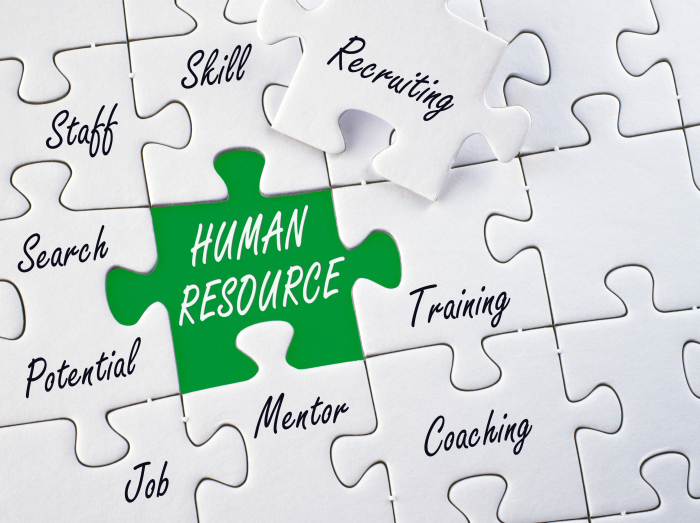
 Data Structure
Data Structure Networking
Networking RDBMS
RDBMS Operating System
Operating System Java
Java MS Excel
MS Excel iOS
iOS HTML
HTML CSS
CSS Android
Android Python
Python C Programming
C Programming C++
C++ C#
C# MongoDB
MongoDB MySQL
MySQL Javascript
Javascript PHP
PHP
- Selected Reading
- UPSC IAS Exams Notes
- Developer's Best Practices
- Questions and Answers
- Effective Resume Writing
- HR Interview Questions
- Computer Glossary
- Who is Who
What are the Different Functions of the Human Resources Department?
The attrition rate in India has surged from 6% in 2020 to 20.3% in 2022. The attrition rate refers to the number of people who have left the organization in the current period.
Attrition rate = (total number of people leaving the organization voluntarily + total number of people leaving involuntarily) / {(total number of employees at the start of the year + the total number of employees at the conclusion period of the year) / 2}
The attrition rate in India is supposed to increase in 2023 as well. As a result, it is critical for employers to look after their employees. The Human Resources Department (HRD) is a support function of an organization. This department deals with the people of the company. This department is responsible for taking good care of the human capital of the company so as to ensure that employees are productive and the firm is profitable. It is time that we take a deep dive into its functioning.

The Human Resources Department and Why it is Important for a Firm
HRD does not generate direct revenue for the company in the same way that sales do, but it is extremely beneficial for businesses to have a functional and effective Human Resources Department. The Human Resources Department ensures that?
The attrition rate of the company is lower than industry standards.
There is high productivity among the employees, and absenteeism also decreases.
With the HR policies and the appraisal management process, all promotional, rewards, and recognition activities appear to be more equitable and transparent.
Employees feel a sense of belonging because of the different HRD functions.
Employees are engaged in different HRD activities.
Employees have a shoulder to lean on and an ear to listen to their grievances.
Different Functions of the Human Resources Department

In multinational corporations, we see the different HRD functions as different working departments of an organization because of the huge number of employees and the vast level of activities. The general classification of the different Human Resources Department functions could be?

The Talent Acquisition Team ? This team ensures that the organization is never short of talent. They toil hard to fill in all the vacancies created by the resignation of employees or the expansion of the business. They attract talent through different job portals like LinkedIn, Naukri.com, Monster.com, Internshala, and others. They are the first point of contact for the employees. Companies can also hire employees through traditional channels like newspapers, radio, and TV. The recruitment team creates a pool of interested and relevant candidates and helps the firm shortlist and find the right selection.
The Onboarding and Documentation Team ? This team ensures that the employee's induction session is carried out. In the induction session, a brief is given to the employees regarding the organization, their reporting hierarchy, the different policies of the organization, the pay structure, the leave status, and others. The team also runs background checks on employees and ensures all the documents related to the onboarding of the employee, as well as the interview feedback, are in place.
Resource Management Team ? Once an employee has been on boarded in the organization, the HRD must ensure that they are assigned to the appropriate projects. This department also ensures the swift movement of the employees between projects and the utilization status of the employees. People on the bench (without work) not only cost the company money but also decrease the morale of the employees.
People Engagement Team ? After the employees have been allocated to different projects and started working in the company, it is important for the firm to ensure that they are happy in the organization. Happy employees are the most productive employees. This function deals with holding various activities for the employees on different occasions so that they can create social relationships outside their workspace and feel at home. Organizing small events at different festivals, team bonding activities, and conducting sessions for mental and physical health are just some of examples.

Learning and Development Team ? This department deals with the learning and development of the employee to make them job-ready and enhance their skills. The employee is going to master their current roles after six months of working, and because of the self-actualization need of individuals, they will start to seek better. To ensure that employees stay in the organization, they must be abreast of the current market trends and ready for bigger roles, where learning and development become important. Conducting Microsoft Excel or PowerPoint training, communication workshops, and training activities are just some examples.
Performance Measurement and Appraisal Management Team ? This department ensures that the appraisal management process of the organization is transparent, free from bias, based on objective achievement, and conducted according to policy. Employees will leave an organization where they are not valued and their contributions are not recognized, so this is critical for the company. This department hears both sides and makes decisions as per company policy. The department sets up KRA (Key Results Area) and KPI (Key Performance Indicator) for every department and career level of employees.

Payroll team ? Human beings work for others in exchange for something. This is something that is major in today's era. Ensuring that your employees receive their salaries on time means that any queries regarding their salary structure or reimbursement need to be resolved on an urgent basis. Timely dispatch of salaries is a huge motivation factor for employees and directly affects their productivity.
In addition to the aforementioned activities, the human resources department is responsible for the following major business and societal trends?
Hiring as well as retaining the DEI (diversity, equity, and inclusion) workforce in the company.
Ensuring the company feels like a safe space for employees.
Conducting POSH (Prevention of Sexual Harassment) training sessions and taking action if a sexual harassment case arises.
Employee grievances and redressal handling system, among others.
It is not necessary for firms to have the HRD divided into the following broad headings only; they can divide, subdivide, or club as per their convenience and the needs of the organization. A startup may just have one human resource professional in the company, who might even look after some of the administration-related work along with all the above-mentioned HR activities. We generally see a company having 1 HR for an average of 500 employees, but it is time that we break the stereotype. The world is moving globally, so it is very difficult to attract and retain the best talent. Employees will leave for better compensation, but they will always stay for the good culture.

